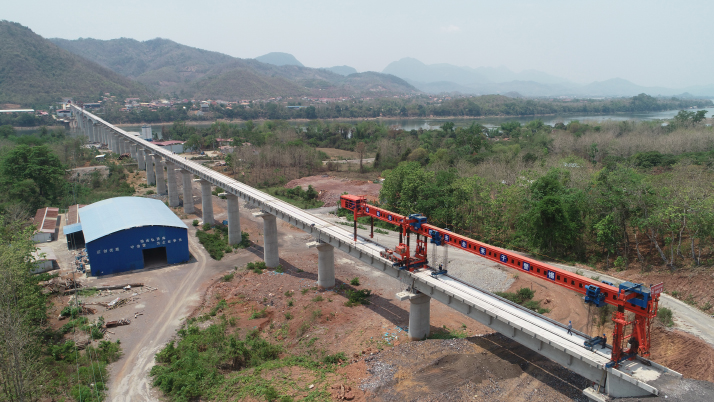China’s Continued Opening up an Effort to Boost Globalization, Global Economic Healing

To achieve the collective goal of solving disputes with multilateralism and promoting globalization, more countries need to be cooperative, open and inclusive.
As the novel coronavirus disease (COVID-19) pandemic continues to spread globally, experts have pointed out that a second, and even a third wave of the disease are highly possible before a vaccine arrives. Robert Redfield, Director of the U.S. Centers for Disease Control and Prevention, has warned that a second wave in winter could hit the U.S. harder than the current outbreak.
The pandemic has disrupted the global supply and value chains, plunging the world economy into recession. There is an increasing risk of the major economies abandoning open cooperation and slipping into isolation. Globalization faces a crisis.
Against this backdrop, the performance of China’s economy shows economic recovery is possible. According to China’s National Bureau of Statistics, China’s GDP in the second quarter grew by 3.2 percent year on year, reversing a 6.8-percent decline in the first quarter.
After the 2008 financial crisis, major developed economies, such as the U.S., Europe and Japan, were in deep recession. China led the global recovery in the second quarter of 2009 and maintained medium-to-high speed growth, pulling the world economy out of recession.
With the world economy falling into recession once again under the economic impact of COVID-19, China, as the world’s second largest economy, has continued to promote a higher level of opening up, becoming the main source of the recovery of the world economy once again. While the U.S. and a few other countries are engaged in unilateralism and protectionism, China has committed to expanding its opening up, stabilizing the industrial and supply chains, and promoting reform and development.
From 2017 to 2020, the items on the negative list, which is released by China’s policymakers to specify the areas foreign investors are restricted from, have been narrowed from 93 to 33.
Since May, China has lifted the cap on the investment ratio of foreign institutions in joint ventures and broadened the access for foreign banks. On June 1, the government announced the plan to develop Hainan Province in the south into a free trade port, which will gradually establish a tax system compatible with high-level free trade ports, and implement the principles of zero tariff, low tax rates, simplified taxation and strong rule of law.

In recent years, the contribution of China’s economy to the growth of the world economy has been over 30 percent, surpassing the total contributions by the U.S., the eurozone and Japan. It has been a major driver of the world economy’s resurgence and growth.
China’s opening up and development can make an important contribution to the global poverty alleviation effort. Poverty alleviation is one of the 17 goals in the United Nation’s 2030 Agenda for Sustainable Development. A UN report in 2019 indicated that the total number of people living in poverty increased from 784 million in 2015 to 821 million in 2018.
According to a study by the World Bank, the Belt and Road Initiative proposed by China will lift 7.6 million people out of extreme poverty and 32 million people out of moderate poverty in the participating countries. The initiative will also increase trade in participating countries by 2.8-9.7 percent, global trade by 1.7-6.2 percent, and global revenue by 0.7-2.9 percent.
China’s opening up and development will help improve the wellbeing of the people of all countries. Employment is the foundation of people’s livelihood, and China’s vast market can create a lot of job opportunities for the world.
A survey conducted by China Central Television and China International Publishing Group in 2017 found that of the 10,000 respondents worldwide, three out of 10 believed that they could get employment opportunities in Chinese companies. Over 100 state-owned Chinese enterprises have invested in 185 countries and regions around the world, generating 330,000 local jobs. The $18-billion investment in the Belt and Road Initiative alone has created over 160,000 jobs.
According to a World Bank estimate, China’s foreign investment and imports and exports directly generate 15 million jobs in various countries every year.
Opening up and cooperation, inclusiveness and tolerance are in the interests of all. To cope with the global crisis and give momentum to globalization, it is especially important for major powers to coordinate and lead in building international consensus, enhancing mutual trust, maintaining regional peace and stability, and promoting multilateral cooperation.
In today’s world, development issues are still at the root of the political and social problems that many countries face. To achieve sound and sustainable development and benefit mutually, countries need to open up and cooperate. Some countries are engaged in geopolitics at the cost of future development, politicizing economic issues and creating confrontations that are fragmenting the world into small groups. This confrontation is setting globalization back, delaying the resolution of urgent problems facing all, and hindering long-term development.
To achieve the collective goal of solving disputes with multilateralism and promoting globalization, more countries need to be cooperative, open and inclusive.
The author is president of the Center for China and Globalization.
 Facebook
Facebook
 Twitter
Twitter
 Linkedin
Linkedin
 Google +
Google +










